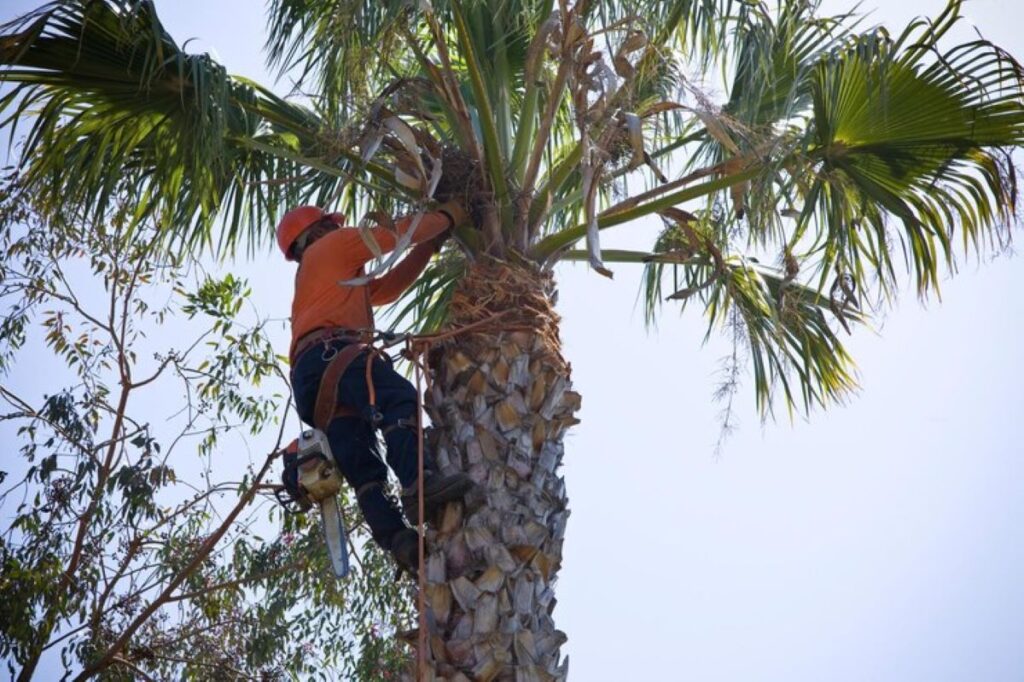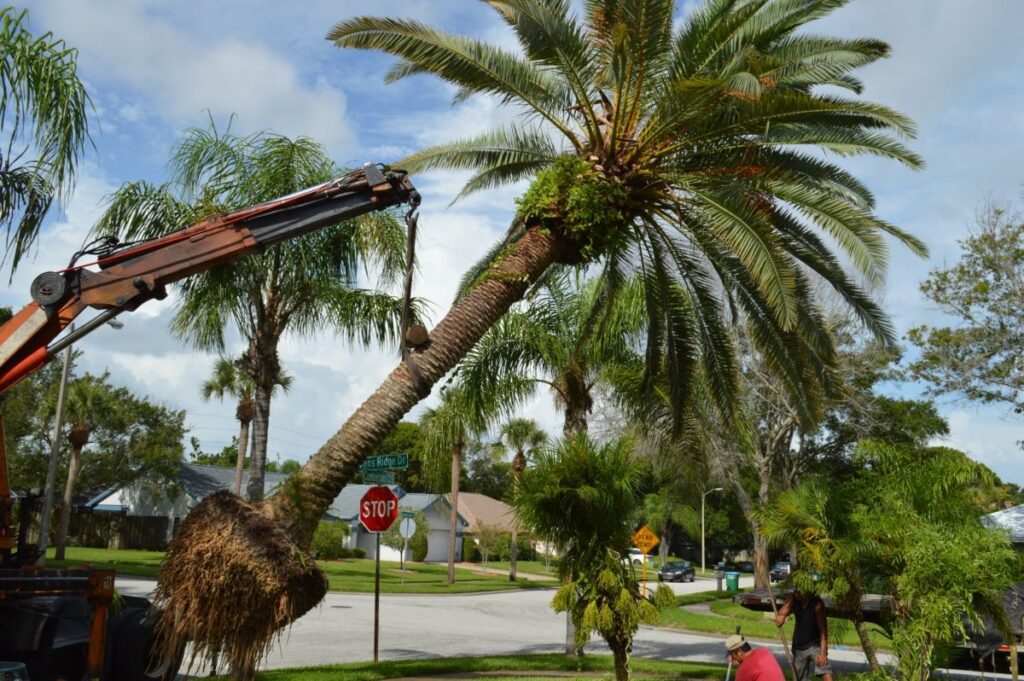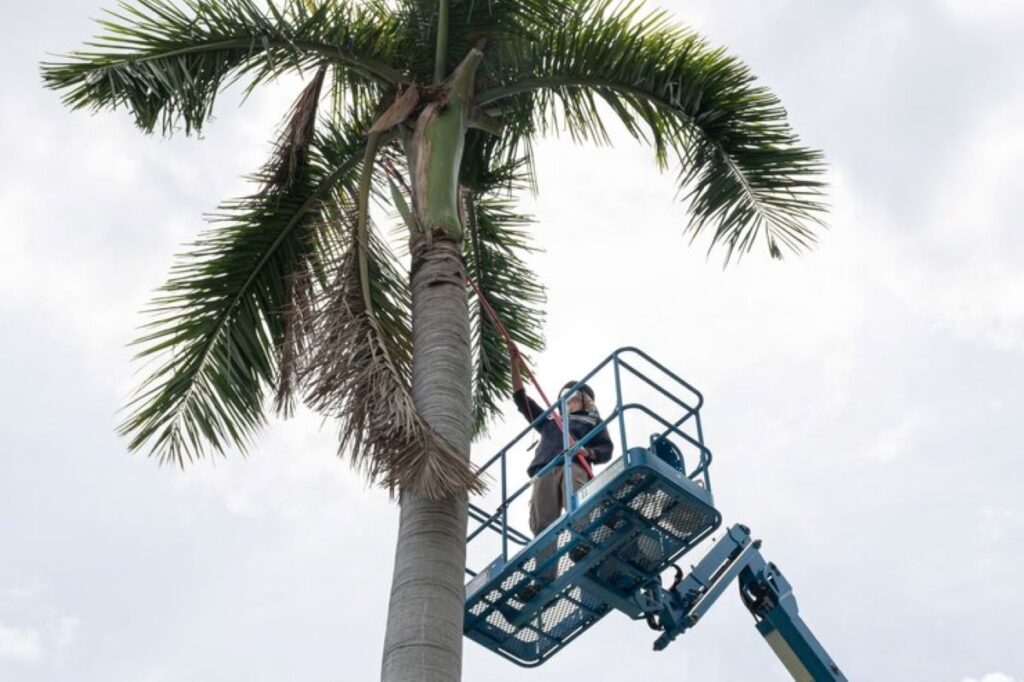Palm trees are a quintessential part of Sydney’s landscape, adding a tropical touch to the city’s aesthetics. However, there are instances when removing these trees becomes necessary. Whether due to disease, damage, or simply a change in landscaping plans, understanding the best practices for palm tree removal is essential. This article provides comprehensive tips and insights into the process, ensuring that it is conducted safely and effectively.
Understanding the Need for Removal
Before embarking on the palm tree removal, it is crucial to understand the reasons behind such a decision. Various factors can necessitate the removal of these trees, and recognising them can help in making an informed choice.
Health Concerns
One of the primary reasons for removing a palm tree is health issues. Palm trees can be susceptible to diseases such as Ganoderma, which can cause the tree to rot from the inside out. Signs of disease include yellowing fronds, wilting, and a general decline in health. If a palm tree is found to be diseased, removal may be the best option to prevent the spread of pathogens to nearby trees. Furthermore, certain pests, like the palm weevil, can also wreak havoc on palm trees, leading to significant damage and further health complications. Regular inspections can help identify these issues early, allowing for timely intervention before the tree becomes a liability.
Safety Hazards
In urban environments like Sydney, palm trees can pose safety hazards. Overgrown fronds can obstruct visibility for drivers or pedestrians, while dead fronds may fall, causing injury or damage. Additionally, if a palm tree is leaning or has structural issues, it may be at risk of falling during storms, necessitating its removal to ensure public safety. The potential for falling debris is particularly concerning in high-traffic areas, where the risk of accidents increases significantly. Moreover, during severe weather events, palm trees with compromised root systems may be uprooted, leading to further hazards, including damage to property and power lines. Therefore, assessing the structural integrity of palm trees regularly is essential for maintaining a safe environment.
Landscape Aesthetics
Sometimes, the decision to remove a palm tree is purely aesthetic. Homeowners may wish to redesign their gardens or replace old palms with new landscaping features. In such cases, it is important to consider the overall design and how the removal will impact the surrounding environment. For instance, the removal of a large palm can open up space for more diverse plantings, allowing for a richer tapestry of colours and textures in the garden. Additionally, the choice of replacement plants can significantly enhance the visual appeal of a property, contributing to its overall value. It is also worth noting that some homeowners may prefer to replace palm trees with species that are better suited to the local climate or that require less maintenance, thereby creating a more sustainable garden ecosystem.
Planning for Removal
Once the decision to remove a palm tree has been made, careful planning is essential. This ensures that the process is carried out efficiently and safely, minimising disruption to the surrounding area.
Assessing the Site
Before removal, assess the site where the palm tree is located. Consider the proximity of buildings, power lines, and other trees. This assessment will help determine the best approach for removal, as well as any necessary precautions that need to be taken. If the tree is particularly large or close to structures, professional assistance may be required.
Obtaining Permits
In Sydney, certain regulations govern the removal of trees, including palm trees. It is essential to check with local councils regarding any permits needed for removal. Failure to obtain the necessary permissions can result in fines or legal issues. Understanding local regulations will ensure compliance and smooth execution of the removal process.
Choosing the Right Time
The timing of palm tree removal can significantly impact the process. It is generally advisable to remove palm trees during the cooler months, particularly in autumn or winter. This reduces stress on the tree and surrounding vegetation and allows for better planning regarding disposal and landscaping changes.
Methods of Removal
There are several methods for removing palm trees, each with its own advantages and considerations. The choice of method often depends on the size of the tree, its location, and the resources available.

Manual Removal
For smaller palm trees, manual removal can be an effective method. This involves digging around the base of the tree to expose the roots and then carefully uprooting it. This method is labour-intensive but can be done without heavy machinery, making it suitable for residential areas. However, care must be taken to avoid damaging surrounding plants and structures.
Mechanical Removal
For larger palm trees, mechanical removal may be necessary. This involves using specialised equipment such as chainsaws and stump grinders. Professional tree removal services often employ these methods, ensuring safety and efficiency. Mechanical removal is particularly useful for trees that are too large to be removed manually and can significantly reduce the time and effort required.
Chemical Methods
In some cases, chemical methods can be employed to facilitate the removal of palm trees. This involves applying herbicides to the tree to kill it before removal. However, this method should be used with caution, as it can have environmental implications and may affect surrounding vegetation. It is advisable to consult with professionals before using chemical treatments.
Safety Considerations
Safety is paramount during the removal of palm trees. Whether opting for a DIY approach or hiring professionals, understanding the risks and taking appropriate precautions is essential.
Personal Protective Equipment (PPE)
When removing palm trees, wearing the appropriate personal protective equipment is crucial. This includes hard hats, gloves, safety goggles, and steel-toed boots. These items protect against falling debris and other potential hazards associated with tree removal.
Working with Professionals
For those unsure about the removal process or dealing with large trees, hiring professional tree removal services is highly recommended. These experts have the necessary training and equipment to safely remove trees while minimising risks to people and property. Additionally, they are knowledgeable about local regulations and can handle the necessary permits.
Emergency Preparedness
In the event of an accident or injury during the removal process, having a plan in place is essential. Ensure that a first aid kit is readily available, and that individuals involved in the removal know how to contact emergency services. Being prepared can make a significant difference in ensuring safety during the removal process.
Post-Removal Considerations
After a palm tree has been removed, there are several considerations to keep in mind to ensure the area is left in good condition and to plan for future landscaping.
Stump Removal
Once the palm tree is removed, the stump will often remain. Stump removal can be done using a stump grinder or by digging it out manually. Leaving the stump can lead to issues such as pest infestations or regrowth, so it is advisable to remove it if possible. Professional services can assist with this process, ensuring that the area is clear for future planting or landscaping.
Site Restoration
After removal and stump grinding, the site may require restoration. This can involve filling in the hole left by the stump, adding soil, and planting new vegetation. Restoring the site not only improves the aesthetics of the area but also supports local wildlife and promotes biodiversity.
Future Planting
With the palm tree removed, homeowners may wish to consider what to plant in its place. Selecting appropriate plants that complement the surrounding landscape is essential. Native Australian plants are often a great choice, as they require less maintenance and are better adapted to the local climate. Consulting with a landscape designer can provide valuable insights into suitable options.

Conclusion
Removing a palm tree in Sydney is a significant decision that requires careful consideration and planning. Understanding the reasons for removal, assessing the site, and choosing the right methods are crucial steps in the process. Safety should always be a priority, whether opting for a DIY approach or hiring professionals. By following best practices and considering post-removal options, homeowners can ensure a smooth transition and maintain the beauty of their outdoor spaces.
With the right knowledge and preparation, palm tree removal can be a straightforward task, paving the way for new opportunities in landscaping and enhancing the overall appeal of the property.
More to Read : What to Expect from Residential Tree Removal Services in Sydney

